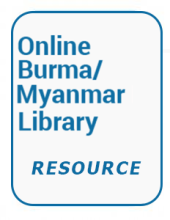Land Library
Bem-vindo à Biblioteca do Land Portal. Explore nossa vasta coleção de recursos de acesso aberto (mais de 74.000), incluindo relatórios, artigos de revistas científicas, trabalhos de pesquisa, publicações revisadas por pares, documentos jurídicos, vídeos e muito mais.
/ library resources
Showing items 1 through 9 of 38.Over ten million people have been displaced from protected areas by conservation projects. Forced displacement in developing countries is a major obstacle to reducing poverty.
Mission Statement: "The Back Pack Health Worker Team (BPHWT) is an independent, nonprofit, multi-ethnic organization dedicated to providing primary health care to ethnic groups and vulnerable populations in armed conflict and rural areas of Burma, where access to healthcare is otherwise unavailab
The response of fragmented vegetation to human impact has been analysed in degraded and degrading areas in Tanzania (Lake Manyara).
Flow and concentrations of suspended sediment, nitrate-N, phosphate-P, atrazine, and metolachlor were monitored during the spring seasons of 1998 and 1999, primarily during storm events, at a tributary station (Big Ditch) and two main-stem stations (Fisher and Mahomet) of the Upper Sangamon River
The Natural Resources Conservation Service curve–number (CN) method commonly uses three discrete levels (1, 2, and 3) of antecedent moisture condition (AMC) to describe soil moisture at the time of a runoff event.
A framework is described that has been used to assess the effect of the European Commission's Agenda 2000 proposal on the Dumfries and Galloway region, Scotland. The model assesses the impact of agriculture on land-use patterns, the environment and socio-economics of the region.
We propose a simple mathematical framework to define consistently the environmental quality of a given landscape based on the relative abundances of the constituting land cover classes.
Using the UNFCCC as a basis, and the objectives of estimating soil organic carbon (SOC) changes during the period 1900–2100, a spatially explicit database of climate, land cover and soil texture was compiled for a 262,000 km2 region in semi-arid Sudan.
Amounts of organic carbon in the mineral soil (SOC) and fine-root (



